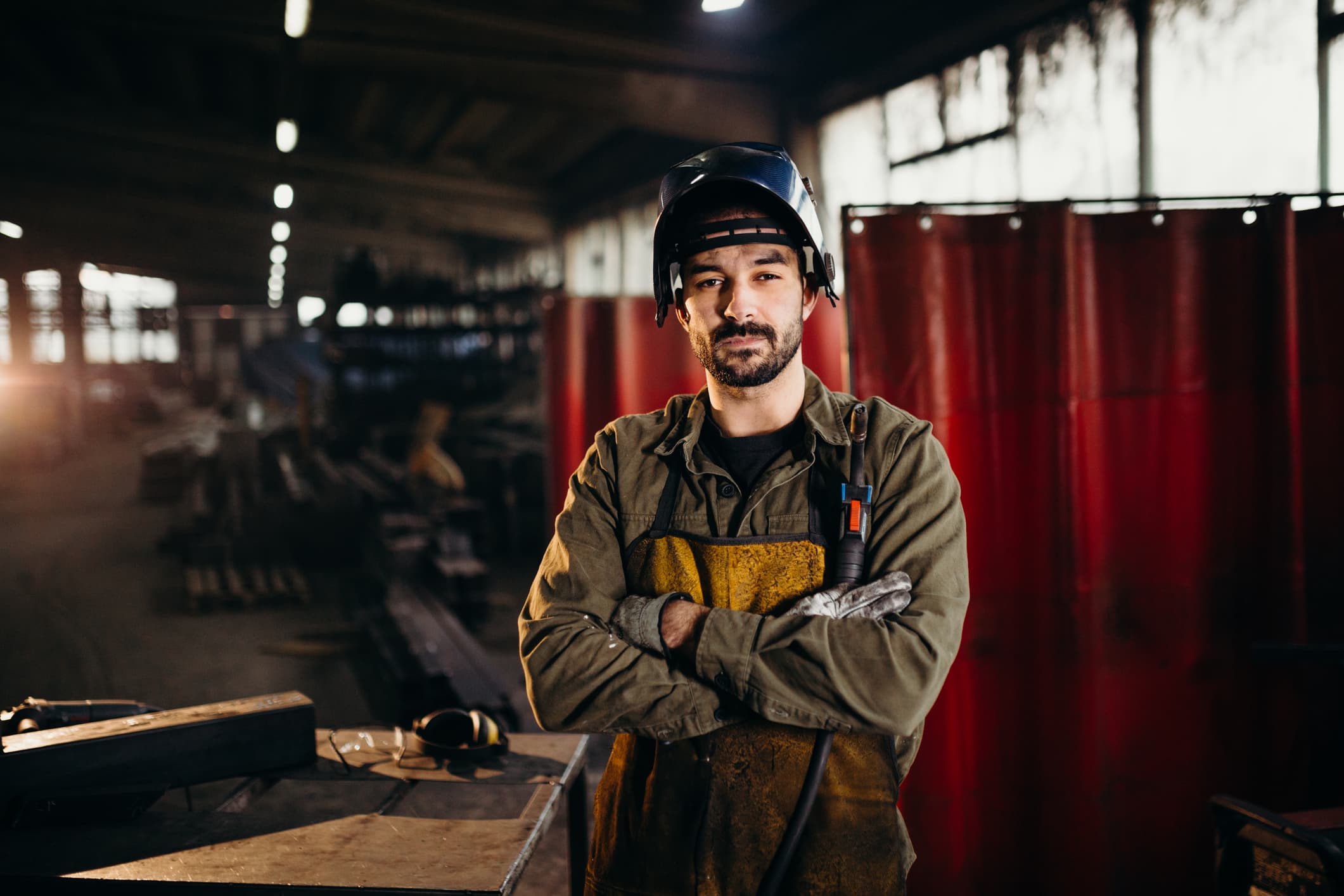Risks of welding fumes to workers health
Published on Posted onWhile gear such as welding helmets protect the eyes and face from sparks, flash burns and ultraviolet lights, they don’t protect against the harmful fumes proven to cause respiratory diseases and cancers.
Welding fume safety has been subject to debate for a long time. In the late 1980s welding fumes were labelled “potentially carcinogenic to humans”. It wasn’t until 2017 that the International Agency for the Research on Cancer reclassified them as definitely cancer-causing.
Welding fume cancer risks were first taken seriously as a workplace injury in 2014, when a Victorian court awarded compensation to a welder with cancer, and recognised for the first time that the line of work elevated the risk of lung cancer.
This ruling set legal precedent and has given further hope to those in the welding industry. But to this day, many don’t realise the link because they aren’t aware of the potential risks, nor that they may be entitled to compensation in the first place.
Epidemiologist Dr Tim Driscoll recently reiterated the risks of welding fumes and their ability to cause not only common respiratory diseases, but cancer, in a webinar – Welding fumes: health risk, legal obligations and controls.
Health risks of welding / Are welding fumes dangerous?
Welding, whether as a metal fabricator, blacksmith, boilermaker or fitter and turner, is skilled work that requires a great deal of care to avoid hazards like:
- Radiation
- Ozone
- Fires and explosions
- Welding gases and vapours
- Welding fumes
Such dangers can lead to diseases like metal fume fever or increase the risk for developing Parkinson-like neural damage, and other lung diseases. Welding gases and fumes especially, can cause respiratory illness from asthma to chronic bronchitis and even lung cancer.
In fact, medical experts established that former welders are 44 per cent more likely to develop lung cancer than those who’ve never worked in the field.
It’s important to note however, that some welding fume health effects may be less obvious in the short term, but show up later, like with asbestos exposure.
WorkSafe Queensland also notes that acute or prolonged exposure to welding fumes may also cause health conditions like:
- Siderosis
- Occupational asthma
- Nervous system disorders
- Eye irritation
- Kidney damage
- Dermatitis or eczema
- Bone and joint problems
- Lead poisoning
What are welding fumes?
When metal is heated above its melting point, particles and soot form in the air as it cools, causing toxic fumes that can easily be inhaled into the lungs.
What’s in the fumes depends on the materials being welded, but generally contain metallic oxides, silicates and fluorides.
Types of welding fume and their risk level
Different types of welding produce different amounts of welding fume. And different types of welding fumes have different risk levels.
For example, submerged arc and laser cutting release lower amounts of fumes than flame cutting and arc gouging.
Cancer Council Australia breaks down the type of welding fume, their sources and cancer risk on their website.
Exposure standards
Welding fume exposure standards also differ for each contaminant. The general industry rule is that the maximum average fume concentration (specific to a welder’s breathing zone such as under their helmet, or respirator) must not exceed 5 milligrams of substance per cubic metre of air.
Exposure can only be measured by taking a sample of the air a welder breathes at work. This is an essential safety measure when working with materials like stainless steel.
WorkSafe Victoria notes that exposure can be affected by:
• Type of welding process used
• Material being welded
• Contaminants in the air
• Length of time doing welding
• Amount of ventilation
Essentially, the higher the exposure, the higher the risk, which is why employers need to ensure there are good control measures in place.
Reducing risk of welding fumes to workers / How to control welding fumes
Your employer has the duty of care to make sure you’re protected by identifying the risk of welding fume injury and taking steps to eliminate the conditions which cause it.
The Work Health and Safety Queensland Welding processes code of practice 2021 outlines specific ways to control risks according to the hierarchy of risk controls:
• Eliminate the risk
• Control the exposure (ventilation, non-flammable welding screens, warning signs)
• Wear personal protective equipment
This means that if ventilation or workplace controls can’t keep below welding fume exposure standards, your employer must provide you with appropriate PPE – namely respirators.
If they fail in this duty of care, you don’t have to shrug it off as “just part of the job”. However, you as a worker are also expected to look after your own health and safety, and make sure you comply with reasonable instructions relating to risk control measures.
Compensation for exposure to welding fumes
Many welding associated respiratory diseases and cancers are recognised as industrial diseases, and are the source of an increasing number of workers compensation and disease compensation claims.
It’s estimated that 110 million workers are exposed to welding fumes worldwide.
In Victoria, a worker may be entitled to WorkCover statutory benefits compensation where the nature of the worker’s current or former employment gave rise to a significantly greater risk to contracting or developing the disease they’re suffering, than had the worker not been working in employment of that nature.
Note: There is no requirement to prove that the condition is caused by any specific employer or employment.
However, when claiming compensation in the form of lump sum damages for a welding fume injury, you must prove your boss was negligent by failing in their duty of care – in this case, to identify risks and introduce safe working practices.
Remember, it shouldn’t be normal to have to risk your health for work. Industrial diseases like these can have devastating impacts on your life and may even cut it short.

